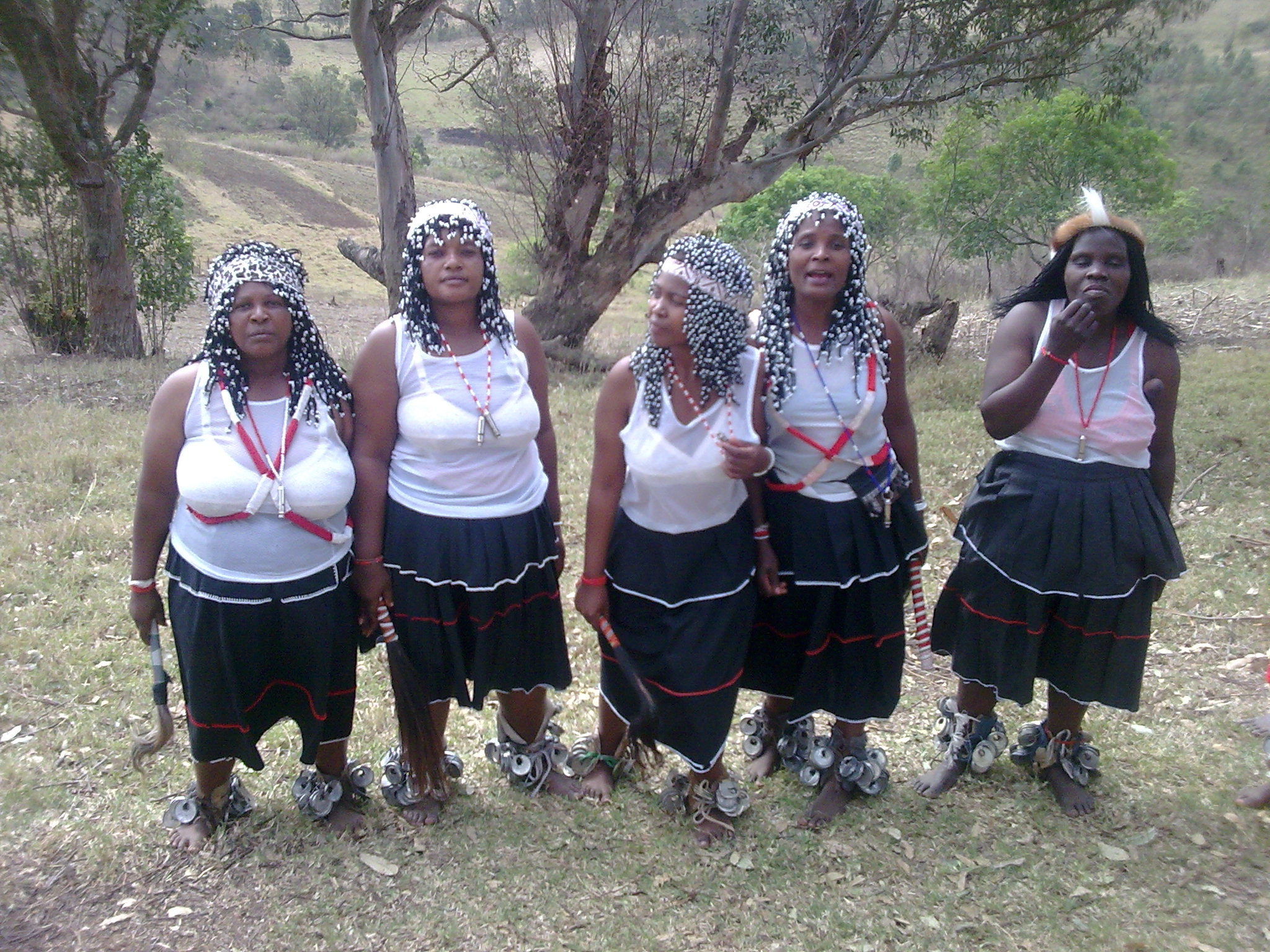|
Warwick Junction, Durban
Warwick Junction, also known as Warwick Triangle, is a transportation and trading hub in the city of Durban, South Africa. It is the largest of its kind in South Africa. The area sees up to 460,000 people daily, who come to the area for its transport interchange and market shopping. History Initially used as a market space by Indian traders during apartheid, the area become popular with black traders towards to the end of apartheid. Markets Warwick Junction is home to nine distinct markets, where informal and formal traders sell a variety of products, from food to traditional medicine. There are approximately 5,000 to 8,000 vendors in the area. The Bead Market has vendors who are mostly from coastal areas adjacent to Durban selling traditional Zulu beadwork items. Berea Station Market, located near two rail stations, has vendors selling traditional Zulu items such as spears and shields, as well as modern clothing and technology items. The Bovine Head Market consists of ve ... [...More Info...] [...Related Items...] OR: [Wikipedia] [Google] [Baidu] |
Durban
Durban ( ; , from meaning "bay, lagoon") is the third-most populous city in South Africa, after Johannesburg and Cape Town, and the largest city in the Provinces of South Africa, province of KwaZulu-Natal. Situated on the east coast of South Africa, on the Natal Bay of the Indian Ocean, Durban is the Port of Durban, busiest port city in sub-Saharan Africa and was formerly named Port Natal. North of the harbour and city centre lies the mouth of the Umgeni River; the flat city centre rises to the hills of the Berea, Durban, Berea on the west; and to the south, running along the coast, is the Bluff, KwaZulu-Natal, Bluff. Durban is the seat of the larger eThekwini Metropolitan Municipality, which spans an area of and had a population of 4.2million in 2022 South African census, 2022, making the metropolitan population one of Africa's largest on the Indian Ocean. Within the city limits, Durban's population was 595,061 in 2011 South African census, 2011. The city has a humid subtr ... [...More Info...] [...Related Items...] OR: [Wikipedia] [Google] [Baidu] |
South Africa
South Africa, officially the Republic of South Africa (RSA), is the Southern Africa, southernmost country in Africa. Its Provinces of South Africa, nine provinces are bounded to the south by of coastline that stretches along the Atlantic Ocean, South Atlantic and Indian Ocean; to the north by the neighbouring countries of Namibia, Botswana, and Zimbabwe; to the east and northeast by Mozambique and Eswatini; and it encloses Lesotho. Covering an area of , the country has Demographics of South Africa, a population of over 64 million people. Pretoria is the administrative capital, while Cape Town, as the seat of Parliament of South Africa, Parliament, is the legislative capital, and Bloemfontein is regarded as the judicial capital. The largest, most populous city is Johannesburg, followed by Cape Town and Durban. Cradle of Humankind, Archaeological findings suggest that various hominid species existed in South Africa about 2.5 million years ago, and modern humans inhabited the ... [...More Info...] [...Related Items...] OR: [Wikipedia] [Google] [Baidu] |
Indian South Africans
Indian South Africans are South Africans who descend from indentured labourers and free migrants who arrived from British Raj, British India during the late 1800s and early 1900s. The majority live in and around the city of Durban, making it one of the largest ethnically Indian-populated cities outside of India. As a consequence of the policies of apartheid, ''Indian'' (synonymous with ''Asian)'' is regarded as a Race (human categorization), race group in South Africa. Racial identity During the colonial era, Indians were accorded the same subordinate status in South African society as Blacks were by the White South Africans, white minority, which held the vast majority of political power. During the period of apartheid from 1948 to 1994, Indian South Africans were legally classified as being a separate racial group. During the most intense period of segregation and apartheid, "Indian", "Coloured" and "Cape Malays, Malay" group identities controlled numerous aspects of dail ... [...More Info...] [...Related Items...] OR: [Wikipedia] [Google] [Baidu] |
Apartheid
Apartheid ( , especially South African English: , ; , ) was a system of institutionalised racial segregation that existed in South Africa and South West Africa (now Namibia) from 1948 to the early 1990s. It was characterised by an authoritarian political culture based on ''baasskap'' ( 'boss-ship' or 'boss-hood'), which ensured that South Africa was dominated politically, socially, and economically by the nation's minority White South Africans, white population. Under this minoritarianism, minoritarian system, white citizens held the highest status, followed by Indian South Africans, Indians, Coloureds and Ethnic groups in South Africa#Black South Africans, black Africans, in that order. The economic legacy and social effects of apartheid continue to the present day, particularly Inequality in post-apartheid South Africa, inequality. Broadly speaking, apartheid was delineated into ''petty apartheid'', which entailed the segregation of public facilities and social ev ... [...More Info...] [...Related Items...] OR: [Wikipedia] [Google] [Baidu] |
Bantu Peoples In South Africa
Bantu speaking people are the majority ethno-racial group in South Africa. They are descendants of Southern Bantu-speaking peoples who settled in South Africa during the Bantu expansion. They are referred to in various census as ''blacks'', or ''Native Africans''. History Early history Archaeological evidence suggests that ''Human, Homo sapiens'' inhabited the region for over 100,000 years, with sedentary agriculture occurring since at least 100 CE. Based on prehistorical archaeological evidence of pastoralism and farming in southern Africa, the settlements in sites located in the southernmost region of modern Mozambique established around are some of the oldest and most proximate pieces of archaeological evidence related to the South African Bantu-speaking peoples. Ancient settlements remains found thus far similarly based on pastoralism and farming within South Africa were dated . Around 1220, the Kingdom of Mapungubwe formed in the Shashe River, Shashe-Limpopo River, Limpo ... [...More Info...] [...Related Items...] OR: [Wikipedia] [Google] [Baidu] |
Traditional African Medicine
Traditional African medicine is a range of traditional medicine disciplines involving indigenous herbalism and African spirituality, typically including diviners, midwives, and herbalists. Practitioners of traditional African medicine claim, largely without evidence, to be able to cure a variety of diverse conditions including cancer, psychiatric disorders, high blood pressure, cholera, most venereal diseases, epilepsy, asthma, eczema, fever, anxiety, depression, benign prostatic hyperplasia, urinary tract infections, gout, and healing of wounds and burns and Ebola. Diagnosis is reached through spiritual means and a treatment is prescribed, usually consisting of a herbal remedy that is considered to have not only healing abilities but also symbolic and spiritual significance. Traditional African medicine, with its belief that illness is not derived from chance occurrences, but through spiritual or social imbalance, differs greatly from modern scientific medicine, which is te ... [...More Info...] [...Related Items...] OR: [Wikipedia] [Google] [Baidu] |
Beadwork
Beadwork is the art or craft of attaching beads to one another by stringing them onto a thread or thin wire with a sewing or beading needle or sewing them to cloth. Beads are produced in a diverse range of materials, shapes, and sizes, and vary by the kind of art produced. Most often, beadwork is a form of personal adornment (e.g. jewelry), but it also commonly makes up other artworks. Beadwork techniques are broadly divided into several categories, including loom and off-loom weaving, stringing, bead embroidery, bead crochet, bead knitting, and bead tatting. Ancient beading The art of creating and utilizing beads is ancient, and ostrich shell beads discovered in Africa can be carbon-dated to 10,000 BC. Faience beads, a type of ceramic created by mixing powdered clays, lime, soda, and silica sand with water until a paste forms, then molding it around a stick or straw and firing until hard, were notably used in ancient Egyptian jewelry from the First Dynasty (beginning ... [...More Info...] [...Related Items...] OR: [Wikipedia] [Google] [Baidu] |
Traditional African Medicine
Traditional African medicine is a range of traditional medicine disciplines involving indigenous herbalism and African spirituality, typically including diviners, midwives, and herbalists. Practitioners of traditional African medicine claim, largely without evidence, to be able to cure a variety of diverse conditions including cancer, psychiatric disorders, high blood pressure, cholera, most venereal diseases, epilepsy, asthma, eczema, fever, anxiety, depression, benign prostatic hyperplasia, urinary tract infections, gout, and healing of wounds and burns and Ebola. Diagnosis is reached through spiritual means and a treatment is prescribed, usually consisting of a herbal remedy that is considered to have not only healing abilities but also symbolic and spiritual significance. Traditional African medicine, with its belief that illness is not derived from chance occurrences, but through spiritual or social imbalance, differs greatly from modern scientific medicine, which is te ... [...More Info...] [...Related Items...] OR: [Wikipedia] [Google] [Baidu] |
Ndwedwe
Ndwedwe is a town in Ilembe District Municipality in the KwaZulu-Natal province of South Africa. The village is 60 km north of Durban and about 20 km west-north-west of oThongathi. Of Zulu origin, the name is said to mean "long, bare table-land or ridge," or "pensive," referring to its peaceful setting in the Valley of a Thousand Hills. Notable residents * Sihle Zikalala, 8th Premier of KwaZulu-Natal The premier of KwaZulu-Natal is the head of government of the KwaZulu-Natal province of South Africa. The current premier of KwaZulu-Natal is Thami Ntuli, a member of the Inkatha Freedom Party. He took office on 18 June 2024. Functions In terms ... References Populated places in the Ndwedwe Local Municipality {{KwaZuluNatal-geo-stub ... [...More Info...] [...Related Items...] OR: [Wikipedia] [Google] [Baidu] |
Traditional Healers Of South Africa
Traditional healers of Southern Africa are practitioners of traditional African medicine in Southern Africa. They fulfil different social and political roles in the community like divination, healing physical, emotional, and spiritual illnesses, directing birth or death rituals, finding lost cattle, protecting warriors, counteracting witchcraft and narrating the history, cosmology, and concepts of their tradition. There are two main types of traditional healers within the Nguni, Sotho, and Tsonga societies of Southern Africa: the diviner (''sangoma'') and the herbalist (''inyanga''). These healers are effectively South African shamans who are highly revered and respected in a society where illness is thought to be caused by witchcraft, pollution (contact with impure objects or occurrences) or through neglect of the ancestors. It is estimated that there are as many as 200,000 traditional healers in South Africa compared to 25,000 doctors trained in bio-medical practice. Tr ... [...More Info...] [...Related Items...] OR: [Wikipedia] [Google] [Baidu] |
Helichrysum Petiolare
''Helichrysum petiolare'', the licorice-plant or liquorice plant, is a species of flowering plant in the family Asteraceae. It is a subshrub native to the Cape Provinces of South Africa — where it is known as ''imphepho'' — and to Angola, Zambia, and Zimbabwe. It is naturalized in parts of Portugal and the United States. Growing to about high and broad, it is a trailing evergreen subshrub with furry grey-green leaves and small white flowers. Other common names include silver-bush everlastingflower, trailing dusty miller and ''kooigoed''. The foliage has a faint licorice aroma, but ''Helichrysum petiolare'' is not closely related to true liquorice, ''Glycyrrhiza glabra'', from which liquorice candy is made. Cultivation It is cultivated for its foliage and as groundcover. This plant prefers sun to partial shade with well drained soil, being susceptible to root rot. It is hardy to zones 9-11, in mild or coastal areas where temperatures do not fall below freezing for extended ... [...More Info...] [...Related Items...] OR: [Wikipedia] [Google] [Baidu] |




